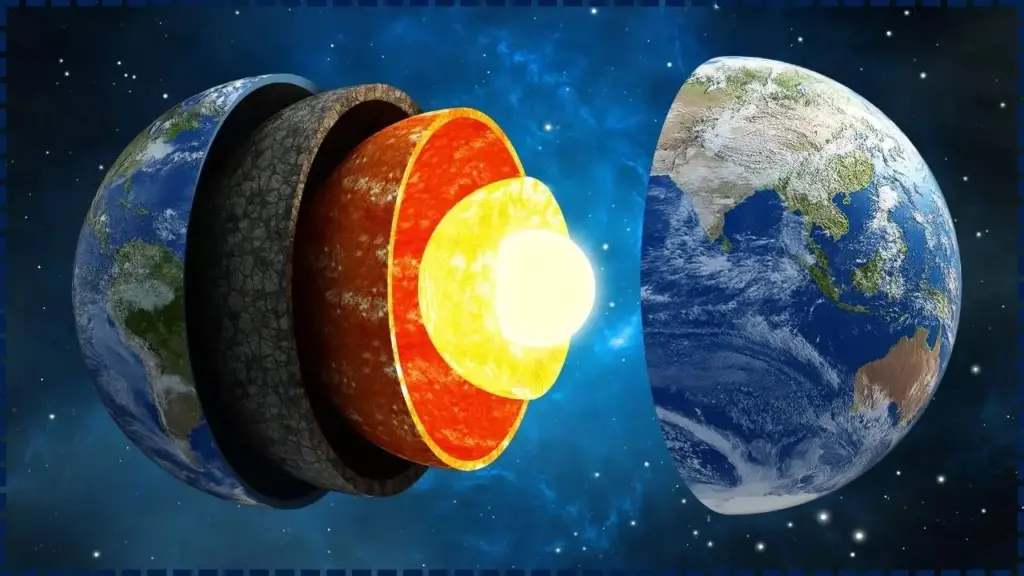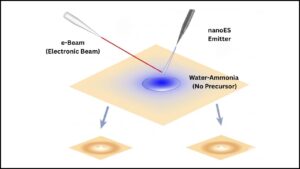A groundbreaking discovery has revealed a previously unknown layer deep within Earth’s core, termed the innermost inner core. This 400-mile-wide metallic ball, identified through seismic wave analysis, challenges long-held models of Earth’s structure and could have profound implications for understanding the planet’s magnetic field, heat flow, and overall behavior.

Table of Contents
Earth’s Core Just Got More Complex
| Key Fact | Detail |
|---|---|
| New Layer Discovered | A 400-mile-wide region within the Earth’s inner core, exhibiting unique seismic properties. |
| Seismic Wave Behavior | Seismic waves travel at different speeds in this new inner core layer, indicating distinct material properties. |
| Discovery Method | Analyzed seismic waves from large earthquakes to detect changes in wave speed. |
| Impact on Earth’s Magnetic Field | May offer insights into Earth’s geodynamo and fluctuations in magnetic field strength and direction. |
| Broader Implications | Could impact models of thermal dynamics, volcanic activity, and geological processes. |
The discovery of the innermost inner core is a significant leap forward in Earth science, offering new insights into the planet’s internal structure, thermal behavior, and magnetic field generation. As research continues, scientists will refine models of Earth’s deep interior, further enriching our understanding of the forces that drive planetary dynamics and shape Earth’s history.
New Discovery Adds Complexity to Earth’s Core
Earth’s core has long been described as a solid, iron-nickel sphere at the planet’s center, surrounded by a liquid outer core. However, the recent discovery of an innermost inner core challenges that simple model, introducing an additional layer of complexity to Earth’s deepest interior. This finding, based on detailed seismic wave analysis, reveals that Earth’s core is not uniform; instead, it consists of multiple layers with distinct properties.
The newly discovered innermost inner core lies at the very center of Earth, beneath the already established inner core, and is approximately 400 miles (650 kilometers) in diameter. Scientists believe that this metallic ball behaves differently from the surrounding inner core, exhibiting unique seismic wave behavior that suggests its structure is more complex than previously thought.
Seismic Wave Analysis: How Scientists Made the Discovery
The discovery was made possible through seismic tomography, a method that uses seismic waves generated by large earthquakes to study the Earth’s interior. Seismic waves travel through different materials and are either refracted or reflected when they encounter boundaries between different layers. By analyzing how these waves behave, geophysicists can infer the properties of the materials they pass through.
In particular, the team led by Dr. Yinan Zhao from the University of Cambridge found that seismic waves passing through the innermost inner core displayed anisotropic behavior. This means that the waves traveled at different speeds depending on the direction they were moving. Anisotropy suggests that the material in this region is not homogeneously arranged and may have a different crystalline structure than the surrounding parts of the core.
This finding is significant because it indicates that the innermost inner core has unique physical properties that have never been observed before in Earth’s deep interior. As Dr. Zhao explained, “The anisotropic behavior of seismic waves tells us that this part of the core is vastly different from what we have modeled up until now.”
What the Innermost Inner Core Might Look Like
Based on seismic data, scientists believe that the innermost inner core is primarily composed of solid iron with traces of nickel, just like the outer regions of the inner core. However, the seismic evidence suggests that the atomic structure of the iron might be different in this innermost region, possibly due to the extreme pressures and temperatures it experiences at the center of the Earth.
The innermost inner core may also have a unique alignment of crystals, which could contribute to the observed anisotropy in seismic waves. This difference in crystalline structure could result from variations in the pressure and temperature within that region of the core.
Why It Matters: Impact on Earth’s Magnetic Field and Heat Dynamics
The discovery of the innermost inner core may have far-reaching implications for our understanding of Earth’s magnetic field. The Earth’s magnetic field is generated by the motion of molten iron in the outer core through the geodynamo process. As the innermost core could affect the dynamics of the surrounding materials, this discovery might help explain fluctuations in the strength and direction of Earth’s magnetic field over time.
Furthermore, the innermost inner core’s properties may influence the planet’s thermal dynamics—how heat is transferred from the core to the mantle. This has implications for geological processes such as plate tectonics, volcanic activity, and earthquakes.
“The discovery of this layer suggests that heat transfer within Earth may be more complex than previously thought,” said Dr. Linda Smith, a geophysicist at MIT. “Understanding the innermost inner core could give us better insight into the dynamics of Earth’s internal heat engine.”
Comparisons to Other Planets
Earth’s core is not the only one that intrigues scientists. Understanding how Earth’s inner core compares to those of other planets in the solar system can help scientists learn more about planetary formation and evolution.
For example, Mars has a core that is thought to be mostly solid, but without the convecting outer core that generates a magnetic field. Venus, on the other hand, may have a core similar to Earth’s, but its magnetic field is much weaker. Gas giants like Jupiter and Saturn have massive, liquid metal cores, where high-pressure conditions could create entirely different behaviors.
Comparing these differences can shed light on how the structure of a planet’s core affects its overall geology and magnetism, potentially informing future exploration and study of other planets.
Next Steps for Research
The discovery of the innermost inner core opens up new avenues of research. In particular, scientists will need to refine existing models of Earth’s core to incorporate this newly identified layer and its unique properties. Several areas of research are likely to be pursued:
- Enhanced Seismic Imaging: By improving the resolution of seismic tomography, scientists can map the inner core in greater detail, providing more insight into its structure.
- High-Pressure Laboratory Simulations: Recreating the extreme conditions found deep within Earth’s core will help scientists understand the material properties that lead to anisotropic behavior.
- Magnetic Field Modeling: Future studies will also focus on how the innermost inner core impacts Earth’s geodynamo and magnetic field, potentially revising models of magnetic field behavior over geological time.
FAQ About Earth’s Core Just Got More Complex
Q: What is the innermost inner core?
A: The innermost inner core is a previously undiscovered layer within Earth’s core, approximately 400 miles (650 kilometers) in diameter, with unique seismic properties compared to the rest of the core.
Q: How was this new layer discovered?
A: The innermost inner core was detected using seismic tomography, which analyzes how seismic waves pass through the Earth and are refracted or reflected by different materials.
Q: What are the implications of this discovery?
A: This discovery could offer new insights into Earth’s magnetic field, improve models of the planet’s thermal dynamics, and refine our understanding of the geodynamo process that generates the magnetic field.
Q: What is next for research on Earth’s core?
A: Future research will focus on enhancing seismic imaging, conducting laboratory simulations of core conditions, and investigating how this new layer influences Earth’s magnetic field and thermal dynamics.



















